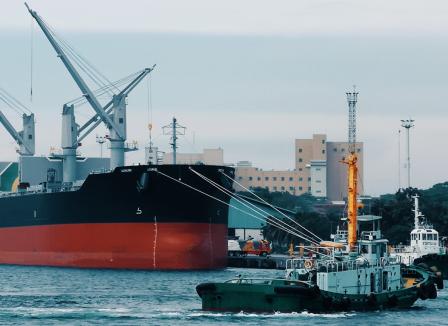Port and Goods Movement Emission Inventories
On this page:
Overview

The Port Emissions Inventory Guidance, finalized in September 2020, describes how to develop port-related and goods movement emissions inventories, which are quantifications of all air emissions of selected pollutants that occur within a designated area by mobile sources for a given time period. This guidance has specific information on how to develop inventories for criteria pollutants and precursors, climate-related pollutants, mobile source air toxics, and energy consumption. EPA updated this guidance in response to recommendations from the Clean Air Act Advisory Committee on the development and implementation of an EPA-led voluntary initiative to improve port environmental performance and air quality for port communities. This guidance describes the latest, state-of-the-science methodologies for preparing an emissions inventory for the following mobile source sectors: ocean-going vessels, harbor craft, recreational marine, cargo handling equipment, onroad vehicles, and rail.
This guidance is intended to help port authorities and other port operators, state and local governments, Tribes, those doing business at ports (such as terminal operators, tenants, and shipping companies), local communities, and other stakeholders who want to prepare mobile source emission inventories for regulatory, voluntary, and research purposes. The methodologies are broadly applicable to all types of ports, including seaports, Great Lakes ports, and river ports, as well as railyards, freight terminals, intermodal facilities, freight corridors, and other types of facilities that handle and move goods.
Other Materials
Port Emission Inventory Guidance – Public Webinar Slides (October 2020)
This webinar, held on October 29, 2020, covered the methodologies described in the guidance to prepare a port-related emissions inventory for landside and waterside emissions across six port-related sectors: ocean going vessels, harbor craft, recreational marine, cargo handling equipment, onroad vehicles, and rail. The webinar covered the data inputs, methods, and analysis approaches available for developing base year and future year inventories of varying levels of detail and geographic scopes based on user capacity, available resources, and intended end use of the inventory.
Frequently Asked Questions
- Why is EPA interested in ports?
A variety of mobile emission sources operate in port areas such as trucks, locomotives, cargo handling equipment, harbor craft, and ocean-going vessels. These mobile sources can emit significant amounts of air pollution, including fine particulate matter (PM2.5), nitrogen oxides (NOx), air toxics, and carbon dioxide (CO2), which impact human health and the environment. Emissions from these mobile sources disproportionately impact nearby communities often comprised of low income and minority populations. EPA’s Ports Initiative is working in collaboration with the port industry, communities, and all levels of government to advance cleaner technologies and practices at ports. - Why did EPA revise this document now?
This document is responsive to September 2016 recommendations from the Clean Air Act Advisory Committee (CAAAC) on the development and implementation of an EPA-led voluntary initiative to improve port environmental performance and air quality for port communities. The CAAAC recommended, among other things, that EPA develop and assess emissions inventory methodologies, and update the information as needed. This update incorporates the methods developed, lessons learned, and practical examples from recent EPA efforts such as the National Port Strategy Assessment and Port Everglades Partnership. It also incorporates updates to EPA’s regulations, models, and existing guidance since the previous document was released in 2009. - Why are port-related emissions inventories important?
A port-related emissions inventory may be developed for a variety of purposes. Regulatory purposes include an inventory developed for inclusion in state implementation plans (SIPs), National Environmental Policy Act (NEPA) analyses, transportation conformity determinations, or general conformity evaluations, among others. An emissions inventory may also be developed for research purposes. Voluntary purposes include evaluating the effectiveness of emission reduction strategies or creating a benchmark to make informed planning decisions. In addition to supporting environmental goals, creating an inventory of emissions can help a port authority or operator prioritize investments. Some of the voluntary strategies that could be adopted have potential co-benefits, such as reducing fuel usage and improving operational efficiencies that may enhance a port’s competitiveness. - Do the methodologies in this document apply to only marine ports?
No, in addition to marine ports, the methodologies in this document are broadly applicable to all types of ports, including seaports, Great Lakes ports, and river ports, as well as railyards, freight terminals, intermodal facilities, freight corridors, and other types of facilities that handle and move goods. - How was this final document updated to incorporate public comments?
During the informal public comment period from February 4th through March 31st, 2020, EPA received numerous comments from stakeholders. The majority of comments EPA received on the draft guidance were positive and expressed the need for such guidance to be made available. Key areas where EPA incorporated comments into the final document are correcting a technical error in the equations used to calculate OGV propulsion engine load factors, clarifying text where commenters had questions, and supplying additional tables of harbor craft emission factors that should make it easier for users to perform the inventory calculations for that sector.
